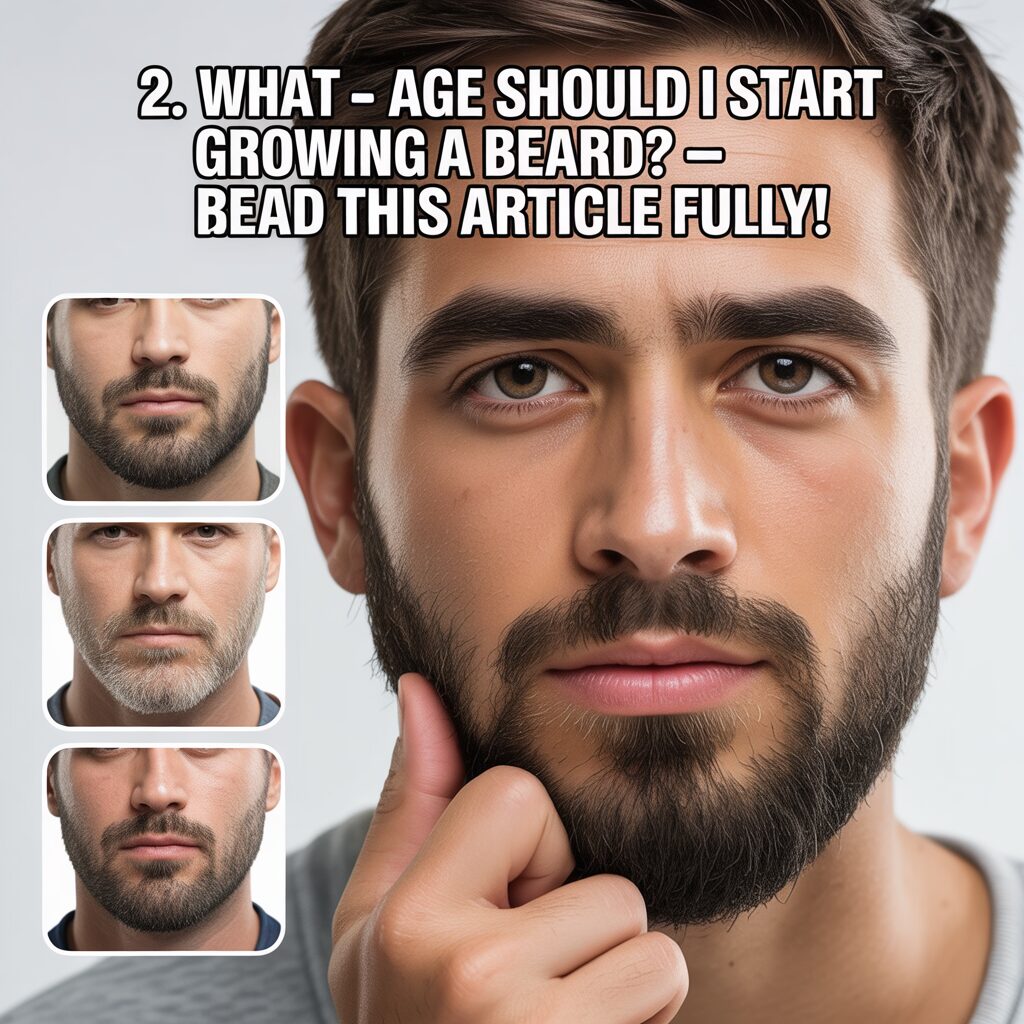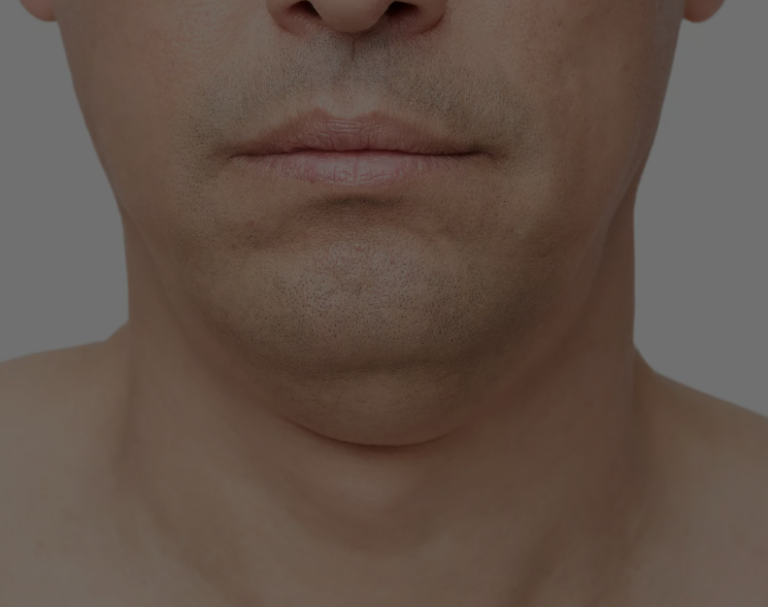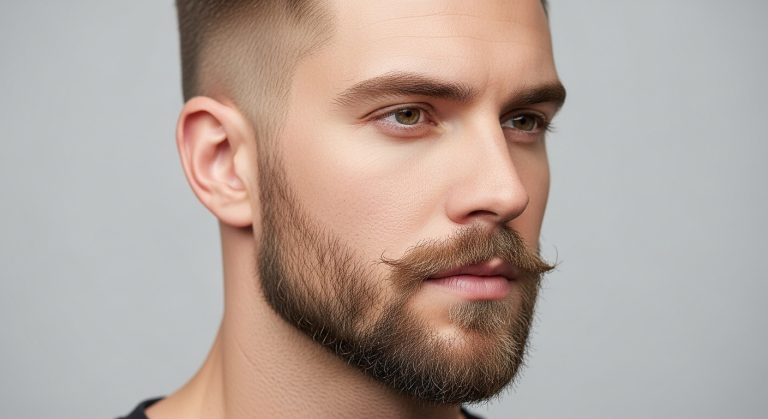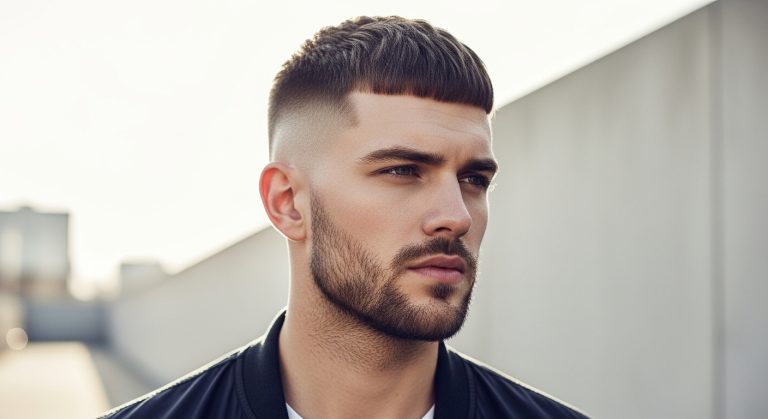What Age Should I Start Growing a Beard?
What Age Should I Start Growing A Beard? Real Tips You Can Find
Growing a beard isn’t just about letting your facial hair grow — it’s about knowing when your body is ready, understanding the growth process, and learning how to care for it properly. Many young men find themselves asking, “When is the right time to grow a beard?” or “Is it too early or too late to start?”
The truth is, the answer varies from person to person. Genetics, hormones, age, and grooming habits all play a role. Whether you’re a teenager just starting puberty or in your twenties and still struggling with patchiness, this guide will walk you through everything you need to know.
1. Puberty: The First Signs of Beard Growth
Beard growth typically begins during puberty, which starts between ages 11 to 16 for most boys. This is when testosterone levels increase, stimulating hair follicles on the face, particularly around the upper lip, chin, and jawline.
Who This is For
Teenagers who are noticing early signs of facial hair and are curious about growing it out.
Tips
- Don’t rush the process — give your body time to develop naturally.
- Focus on overall health: eat well, sleep enough, and stay active to support hormone balance.
Important: Not everyone develops facial hair at the same rate. Patience is key.
2. Genetics: Your Beard Blueprint
Genetics play a huge role in beard growth. If your father or grandfather had a thick beard early, chances are you will too. If they had sparse or patchy beards, it might take longer — or be more difficult — for you.
Who This is For
Anyone curious why their beard is growing slower or looks different from others.
Tips
- Look at male relatives for clues on your potential beard pattern.
- Don’t compare your beard to others — every beard is unique.
3. Age Milestones: What to Expect at Different Stages
While beard growth can begin in the teens, most men don’t grow a full, mature beard until their early to mid-20s. Growth improves and thickens with age due to hormonal changes.
Who This is For
Young men unsure if they’re growing “normally.”
Tips
- If you’re under 18 and your beard is patchy, that’s completely normal.
- Many men see significant beard improvement between ages 20 to 25 — so don’t lose hope early on.
4. Patchiness: Is It Too Early or Just Genetics?
Patchy beard growth is extremely common, especially in teenagers and young adults. It may look uneven for years before filling in.
Who This is For
Those struggling with uneven or patchy facial hair.
Tips
- Let your beard grow out for 4 to 6 weeks before judging its shape or fullness.
- Trim around the patches rather than shaving everything off.
- Try brushing and applying beard oil to promote even growth and improve appearance.
5. Beard Care Starts Before the Beard
Even before you grow a full beard, you can start taking care of your skin and hair follicles to create the best environment for growth.
Who This is For
Teens or young adults just starting out or waiting for their beard to grow.
Tips
- Exfoliate your skin 1–2 times a week to keep pores clear.
- Keep your face clean and moisturized.
- Avoid shaving myths — shaving doesn’t make your beard grow faster or thicker.
6. When to Start: Listen to Your Body, Not the Calendar
There’s no “perfect” age to start growing a beard. Some people are ready at 15, while others might need to wait until 20 or beyond.
Who This is For
Anyone feeling pressure to grow a beard at a certain age.
Tips
- If you’re seeing consistent facial hair growth, you can start experimenting with styles.
- Don’t force it — confidence comes from embracing your natural pace.
7. Medical Considerations: When to See a Doctor
If you’re past your early 20s and still not seeing facial hair or notice other signs like delayed puberty, it may be worth checking with a healthcare provider.
Who This is For
Men in their 20s or older with little to no beard growth and possible hormonal concerns.
Tips
- Consult a doctor if you’re concerned about hormonal imbalances or genetic conditions.
- Blood tests can check testosterone and other hormone levels if needed.
Conclusion: Patience, Not Pressure
Growing a beard is a personal journey, not a race. While most men start seeing signs during their teens, full beard maturity often happens much later. Remember:
- Genetics and age play major roles.
- Be patient and consistent with grooming.
- Confidence matters more than the thickness of your beard.
Whether you’re 15 or 25, what matters most is learning to work with what you have and take care of it well. So, embrace your unique growth pattern and give your beard the time and care it deserves.









![Ultimate Guide To Forked Beards [Beards That Split In The Middle]](https://alphavibe.info/wp-content/uploads/2025/06/Whisk_818f325e35-768x419.jpg)
